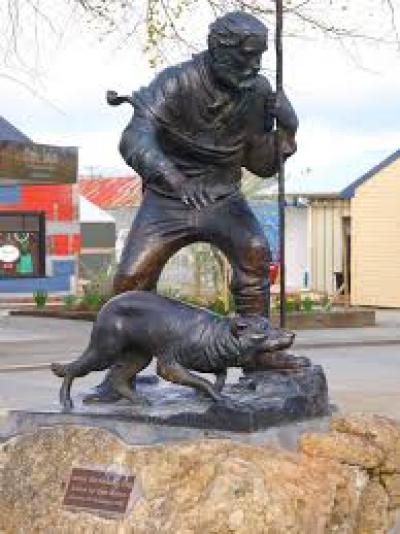First industrial-scale heist since 1855.
The clean getaway of the Ashburton rustlers and their 500 –cow heist underlines the imminence of New Zealand of stock theft as a continuing threat. The theft is the first such large-scale one in more than a generation.
In New Zealand a 500 plus herd is considered a large one and this is the first incident in which such a large number of farm stock have been officially reported as missing.
The cows, in calf, appear not have been insured thus indicating a straight out rustling operation. The non-insurance of the animals points to the rarity in New Zealand of the rustling problem especially on the industrial scale of this one.
Even though rustling is rarely referred to in New Zealand, farmers are constantly aware of the incipient problem and in recent years it has led to increasing friction between agrarian interests and the national promotion of the leisure-tourist sector.
Farmers are eager to cut off roads to scenic areas, notably rivers. There are no farm right-of-ways in the British tradition.
Neither is there the tradition in New Zealand of open-range grazing and this has meant that branding has never been a feature of cattle identification. Damage to hides, and thus diminution of value, remains another factor here.
The standard identification is the ear tag, often carrying digital data. A problem here is that the ear tag technique invented in New Zealand was not designed to counter rustling.
The mid Canterbury heist mystery-within-a-mystery is why such a large scale cattle rustling operation should have been staged at such a low point in milk, and thus cow, values.
Still another element was the disappearance of the herd in mid-Canterbury, an agrarian region intensively farmed and thus well-populated by rural standards.
The episode is worrying for the grazing sector because it indicates the presence of an organised receiver or fencing structure. What has been the fate of the cattle?
Until this incident, the rustling pattern has been most evident in the more populous North Island where it has been confined to small batches of animals seized by opportunist malefactors.
The mid Canterbury rustling is the first such organised theft recorded in New Zealand since 1855.
This was carried out by James Mackenzie who identified a hitherto undiscovered geographical basin in the middle of the Southern Alps..Into this unknown zone he drove his immense and purloined flocks. Mackenzie, and his activities were only discovered when of necessity he had to drive his flocks to the main markets on the coast.
The Mackenzie Country, a vast and stark area dotted with lakes is named after him. It was Mackenzie who was the genesis in New Zealand of the myth of the romantic moonlight outlaw partnered only by his dog. He is commemorated in statue (pictured).
For New Zealand graziers though there is nothing alluring about the prospect of there being in existence an organised criminal structure supporting the modern version of Mackenzie.
From the MSCNewsWire reporters' desk

